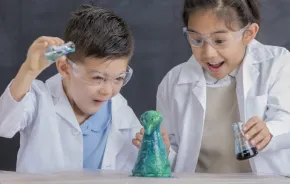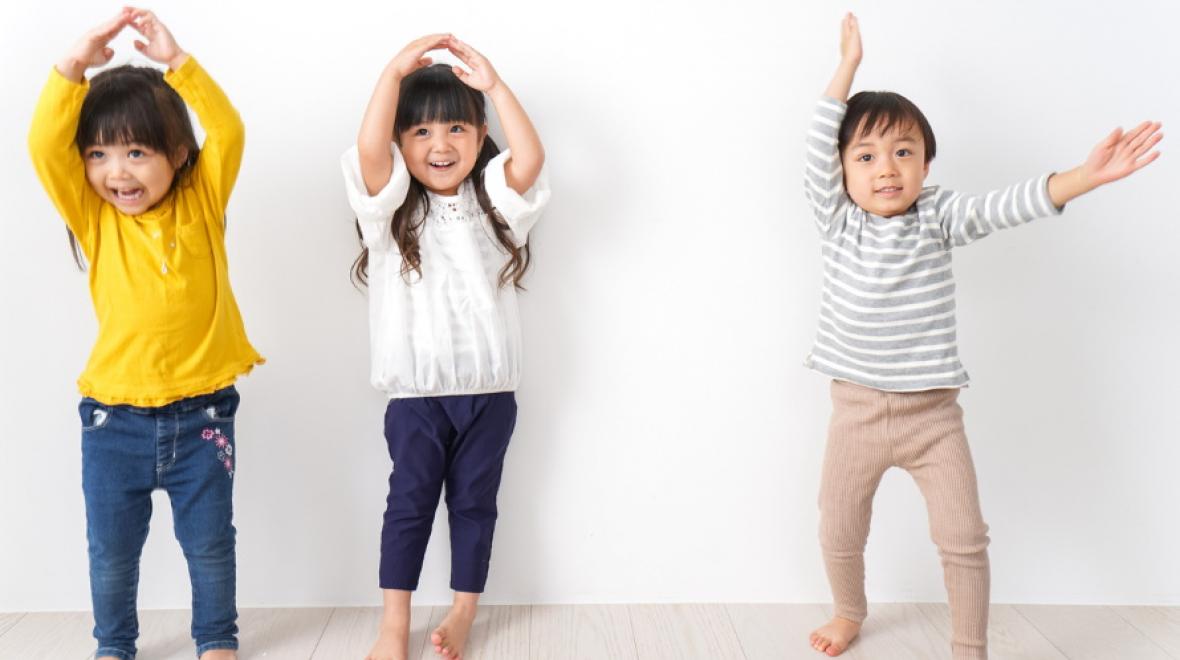
Northwest kids are used to gearing up to go outside: hats, jackets, rain boots and gloves. But sometimes, staying inside is the only option, and you need a quick game plan for fun.
Here’s a grab bag of easy kids’ activities. Any of them can also be the centerpiece for a preschool birthday party.
Toys, technology and rules not required. Just add imagination!
Music and movement
Homemade band
Try free play with instruments real, found or homemade. Have you noticed your child can make sounds with anything? This is the time to let them bang away! Utensils, hands, or feet can drum a beat. Put dried beans, paper clips, or coins in paper, plastic or cloth bags to make shakers. Make a drum out of an old coffee can.
And don’t forget to sing along! Older kids may enjoy learning beats, following along to favorite songs or making up their own songs. Record their music and play it back for added delight!
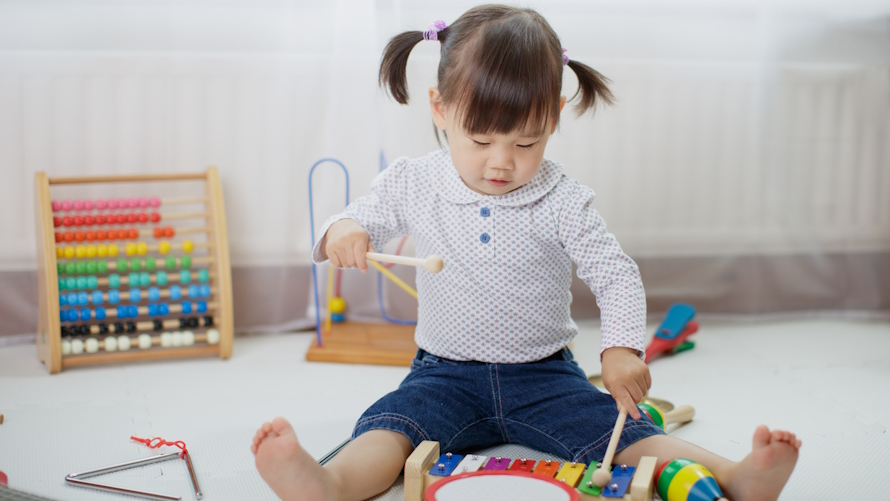
Freeze dance
A classic! All you need is music, and the only guideline is to freeze when the music is paused. Encourage kids to “freeze” in fun poses or with funny faces. Use a variety of musical styles and tempos. Tip: An older child can do the music while you dance with younger ones.
The sleeping song
Here are the short lyrics “Sleeping, sleeping, all the children are sleeping. And when they woke up, they were all ---.” Fill in the blank with various animals, insects, or even inanimate objects and lets their imaginations run wild. Kids love acting like cats, snakes and even robots or babies!
As soon as one thing has run its course, begin the song again in a quiet voice as the children stop and pretend to sleep until the next thing is called. Keep cue cards for yourself, or let the kids be the “caller.” They can even help make the flashcards (ex. write “snake” on one side, and on the other draw a picture of a snake). Keep the cards handy; they’ll want to play again and again.
Indoor obstacle course
Push aside some furniture, and practice gross motor skills without breaking any priceless antiques! Set out a laundry basket and use balled up socks to practice throwing and accuracy. Tape down some yarn or string for a makeshift balance beam. Do moves in place, like running, jumping and hopping. Add yoga moves, use a timer and cheer them on. There are an infinite number of possibilities here.
Scavenger hunt
Take any theme, such as patterns, letters or colors and hunt around the house. Make it official with a clipboard and check off items as you go. Crawl around, reach up high and get down low!
Yoga for kids
If you enjoy yoga, your kids probably do, too! Just remember, they won’t stay quiet and breathe; expect laughter at the names of animal poses and even make up songs as you go. For added literacy practice, make flashcards with the names of the poses and a picture. Classroom favorites are usually airplane (flying warrior), lion and table top. It’s incredible to hear a 5-year-old say, “Yoga calms me down!”
Copy dancing
I think a 4-year-old named this game that originated from a preschool dance party. This game can be played with two to 20 participants, and it’s as simple as it sounds. One person dances while the others copy their moves. Kids love being the leaders, and imitation is, after all, the highest form of flattery. So put on some dancing tunes and show off those moves!
Make up a dance
Five, six, seven, eight! Didn’t everyone do this as kids? I was constantly making up dances with my buddies, and now I do it in the classroom. My organized method is for each participant to choreograph eight counts of movement, and put them together, practicing them in sequence. You can really work up a sweat this way. If this sounds too complicated, just make a Soul Train; no counting required, and it only takes three people!
Story go-round
This is the same concept as the dance-making game. Make up a cooperative story by letting each person add one sentence. Start with characters and a simple plot, like “a dog and cat went to the beach,” and let the children take it from there. The sillier, the better!
Tape shape game
All you need for fun is a roll of painters tape. Make different shapes or letters on the floor (or walls) and then have kids get to each shape or letter in a creative way. Slither to the letter s! Hop on one foot to the number 4. You get the idea.
Paper plate ring toss
Cut the bottom out of several paper plates and paint (or color) the remaining edge with whatever colors you have on hand. Tape an empty paper towel tube to another paper plate and start tossing! You can see pictures and more detail at A Little Learning for Two blog.
Glow stick hide-and-seek
Since the sun sets so early these days, this is a great game to fill the long dark evenings. Start by digging through the junk drawer or pantry, and you will probably find a glow stick laying around. If not, head to you local dollar store and pick up a few. Turn off the lights, hide the glow stick and set the kids loose in the dark to find it. Fun, and lots of squealing, is sure to be had!
Dinosaur movement game
Start by downloading the cube cards from Pre-K pages. Cut out the cards and tape them onto a cube, or simply set them all on the floor or table face down. Roll the cube, or pick up a card, and follow the instructions. Kids will have to “twist like a Tyrannosaurus rex,” “run like a Velociraptor,” “swing your tail like a Stegosaurus” and more.
Arts and crafts
Masks
Homemade masks are fairly easy to make, yet are highly covetable. There are so many possibilities for characters, from animals to superheroes, and lots of variations in how to make them.
Children’s masks can be made out of different types of paper or fabrics, and either tied with elastic or glued on to a craft stick to hold up. The adult will probably need to measure where the eyes should be cut out of the paper or fabric, and how long the elastic should be to go around the child’s head.
No matter how it’s done, it’s likely to get a big smile when the child wears it and peeks in the mirror.
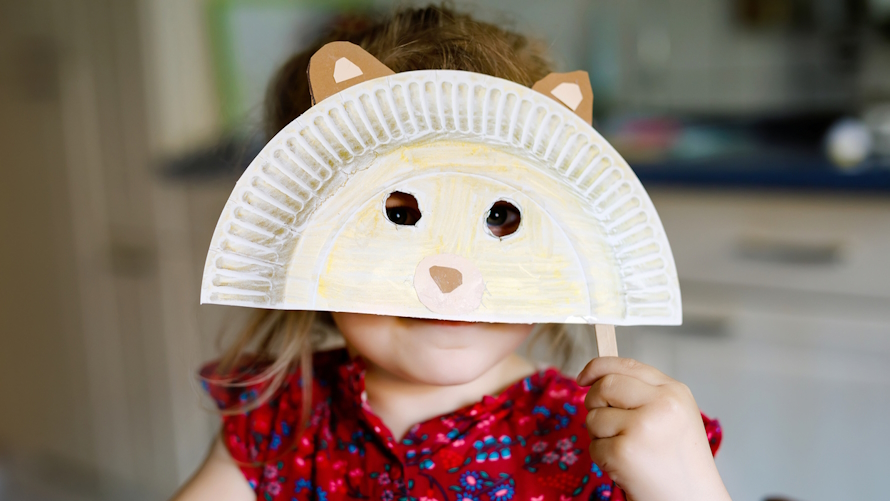
Homemade collage with reusable materials
Simply provide a few items that can be rearranged again and again. Arrange them on a tray or placemat to make patterns, designs and objects. Since the materials are reusable, take a picture to commemorate each creation. Ideas: craft sticks, buttons, paint samples, fabric swatches, spare keys.
DIY stuffed animals
You really can make a lovable stuffed animal (or insect!) with only four things: markers, construction paper, a stapler and recycled newspaper. It’s so easy and gets the kids excited every time.
Put two pieces of paper together, draw your animal’s outline, and cut it out, making two identical shapes. Decorate, color and add as much detail as desired. Then staple the two pieces together about halfway.
Now for the fun part: Stuffing! Use pillow stuffing from a craft store, or just rip and ball up newspaper, and begin stuffing it into your creation. When fully stuffed, staple closed and you’ve got a keeper!
Self-portraits
Using a mirror, let the child draw themselves. Point out facial features like eyebrows and eyelashes. If they draw their whole body, add in some fashion design! Don’t be surprised if your child takes some liberties, i.e. “Yes, I do have rainbow hair!”
Shapes
Help your child learn their shapes by tracing common household items. Turn over a cup to make circles, and trace your cell phone for rectangles. Hunting is part of the fun. Kids may want to decorate their shapes, cut them out and glue them on to larger paper for fancy art projects.
Abacus
Use art supplies to practice math and fine motor skills. You just need string, scissors, tape, paper and beads. Cut a piece of string, tape one end of the string onto the paper and begin stringing the beads. String 10 beads on and tape down the other end of the string. That makes one row. Your child can make as many rows as they like.
Tip: Circle-shaped cereal (like Cheerios) or candies (like Lifesavers) can replace beads in a pinch. Keep the abacus for counting practice.
Ice cube tray sorting and pattern-making
Here’s another way to mix math, art and fine motor skills. You’ll need an ice cube tray, egg container or muffin tin, plus small items to play with, such as various dried beans, buttons, coins or marbles. Jewelry, like plastic rings or earrings have that lost their partner, makes it extra exciting.
Your child can sort the items (by color, size, pattern or any way they like), make patterns with them or invent their own game. There are tons of possibilities and no right answers; this type of play blends logical thinking and mathematical reasoning with creativity.
For extra fun and challenge, use tweezers or clothespins to pick up the items.
Dyed paper
Art, science or interior design? This project is so versatile and produces such attractive results you may want to use it as decoration. Similar to tie-dye, but without the tying, just use paper towels and a few colors of either diluted food coloring or liquid tempera paint to make fantastic designs.
What to do: Fold a paper towel until it’s the size of cracker, then dip it into the paint until saturated, dipping each corner into a different color. Then carefully unfold it and let dry, preferably on a tablecloth or anything you don’t mind staining. Be prepared for repetition as children experiment with different ways to fold the paper and marvel at the lovely results.
When dry, the paper towels can be strung together and hung up, or taped to windows for a stained glass-like effect.
Squiggle art
Each player gets a piece of paper, makes a squiggle on it, then trades with someone. Then make a picture out of the squiggle. The beauty is in the simplicity, as children see that you can turn any mark into art. It’s fun for the adults to see what kids come up with, too!
Bookmaking
Yep, just make your own books. Children have so many stories to tell, and only need help writing it all down. Fold paper in half and staple at the crease to make pages. After the story is written, go back and read it to the child so they can illustrate each page. This simple activity builds confidence, self-esteem and literacy skills.
Collage
Recycle your old magazines and exercise the imagination, all in one! Let children choose and cut their favorite pictures out of magazines (or help them). Then they glue them on paper, then draw and decorate all around it.
Scissors and glue are a must; markers, crayons, oil pastels, stickers and glitter are optional. In addition to magazines, recycle wrapping paper, postcards (you know, like the ones for take-out pizza), tissue paper and (clean) cotton balls to make even grander creations.
Melted crayons
If you have old, broken crayons hanging around, then you have an instant craft project! Reuse those old crayons by making them new again. Unwrap the crayons, arrange them in a muffin tin in a single layer, and cook in the oven on 200 degrees for about 10 minutes.
Let cool, then stick them in the freezer to make it easier to pop them out. Just turn the pan over and you’ll have new cool, round crayons.
Note: When the crayons are fresh out of the freezer, they may not color well. Warm them up in your hands to get them going.
Shaker container painting
Take an old yogurt container (or whatever type of plastic container with a lid is sitting at the top of your recycling bin) and drop in a handful of shakable small items (coins, rocks, marbles, buttons, etc.). Line the inside of the container with a long strip of paper. Squirt some paint on top of the items, put the lid on tight and shake, shake, shake! When your child tires themself out, open the contain and carefully take out the paper, which is now a cool piece of splatter art. Repeat as many times as you’d like!
Paper mâché
This craft can get a little messy, but the results are worth it. Gather newspaper, or scrap paper from your recycling, and rip it into long thin strips about an inch wide. In a bowl, mix flour with water until you have a paste close to the consistency of glue. Dip a strip into the paste and make sure it is completely coated, pulling the strip through two fingers to take off any extra paste.
Lay the strip on an inflated balloon, or around whatever object you want to paper mâché (you can building a shape out of cardboard and tape, chicken wire, or whatever you’d like to use as a base). Repeat with strips of soaked paper until the entire project is covered. Set it aside and let your project dry for several hours (overnight is best if your project is large or if multiple layers have been applied). When your project is dry you can paint it, add streamers or puff balls or anything else you need to make it unique and amazing!
Building, gardening, cooking and more!
Build a fort
There is something so cozy and magical about a fort. Let your kids create their own using sheets, blankets, pillows, chairs, the couch or whatever else you have at home. Throw some pillows into the fort, give the kids a flashlight and you will be amazed how long they play. You might even end up serving them dinner in the fort!
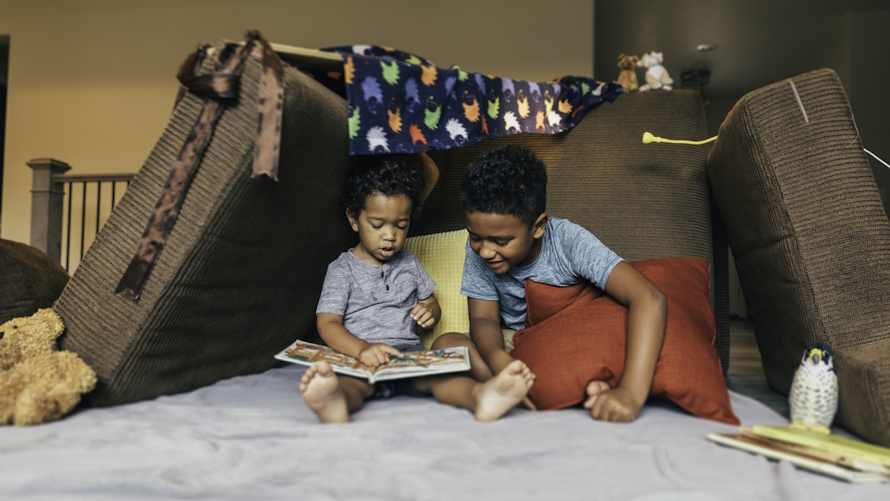
Drama
Put on a play using puppets, dolls or just yourselves! Use a favorite book, classic tale or make up your own story. Find props and costumes and play dress-up with younger children, or put on longer plays with preschoolers. Just act it out and have fun.
If your child has a flair for the dramatic, they’ll take charge of this one and it can easily last an hour (“Okay, pretend I’m the queen. Now you say…”). They love it when you just play along and let them be the director.
Cooking
When you have some extra time, make up an easy, hands-on cooking project for your next snack or meal. For children, cooking can mean sensory exploration, logical ordering and confidence boosting. Let them do as much of the work as possible.
The easiest recipes are ready-to-eat foods like sandwiches, wraps or rollups and salads. Even sophisticated kale chips are kid-friendly; kids wash the kale and pat it dry, tear it off the stem into bite-size pieces, toss it in olive oil and spices and spread the pieces on a tray. Adults work the oven then everyone crunches away!
Gardening
Kids love doing grown-up work, like watering plants, and they excel at playing with dirt. Want some new indoor greenery? Let the kids help you plant, pot and water them! They also love learning plant and flower names.
Water play
Most preschools have a water table that children use for sensory exploration, dramatic play and more. You can make your own using any sized plastic tub. Let kids use cups or pitchers to fill it with water.
Add natural materials like rocks or crystals, household items like spoons, measuring cups and bowls or any little plastic toys they like. Then let the fun begin! It’s amazing to see the stories children build from just these few items. Sensory play is open-ended, engaging and can also be surprisingly calming for kinesthetic learners.
Editor’s note: This article was originally published several years ago and was updated most recently in 2023.






